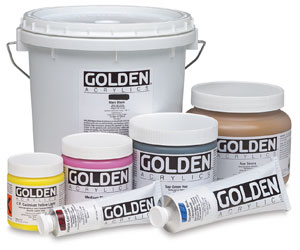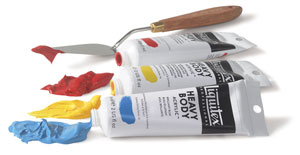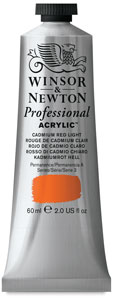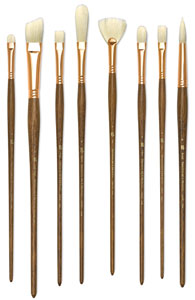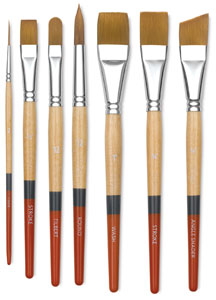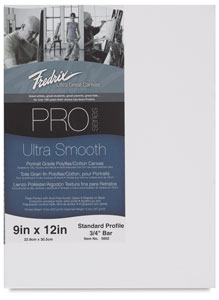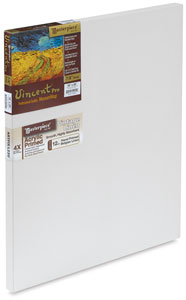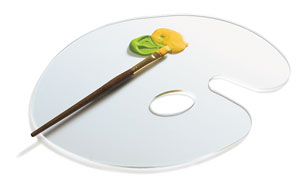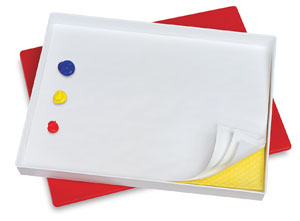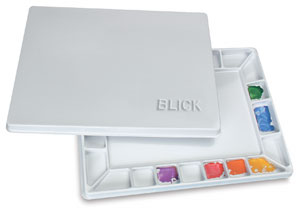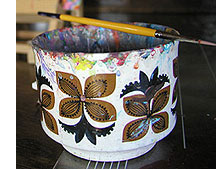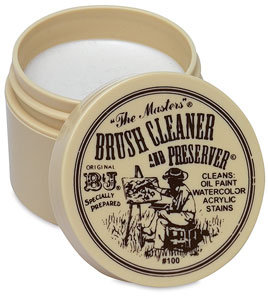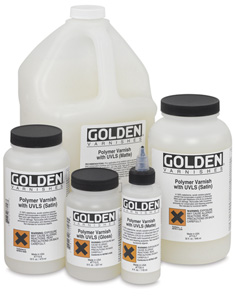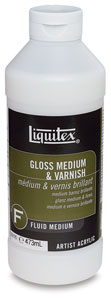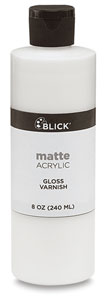Artists Supplies for Painting in Acrylics
If you want to get started with acrylic painting, here is the low-down on all the artist supplies you will need! From paints to brushes and canvas, this page covers it all. You will also find links to even more detailed information about each artist supply!
The artist supplies listed below are all essential for painting with acrylics. This means that you really shouldn't attempt to paint with acrylics unless you have all of these supplies on hand. Read the descriptions below to find out why!
acrylic paint
Acrylic paint is an obvious must if you want to paint in acrylics! Acrylics paints come in tubes and jars. You can buy acrylic paints individually or in acrylic painting sets. To read more about the different brands of acrylics and what colors you will need, read this page about acrylic paint. First you may want to familiarize yourself with an overview of the characteristics and applications of acrylic paints.
When selecting acrylic paint, you'll need to consider things like quality, color, permanence, viscosity, tube or jar, drying time, and brands. Learn about all these things on my in-depth page about acrylic paint, which also includes links to paints that you can buy online.
I've provided links below to the relevant products so that you can easily find them on Blick Art Materials, my favorite online art supplier. I'm a member of Blick's affiliate program, which means if you make a purchase after clicking on one of these links, I'll receive a small commission (at no extra cost to you). Your purchase helps support this site and keeps it free of ads. Click here for more info.
paintbrushes
Paintbrushes will be your best friends while you are painting. Read this Artist Paintbrush Guide to find out all about the different types of paintbrushes for acrylics, what they are used for, and how to care for and clean your paintbrushes.
If you're not sure which paintbrush(es) to buy, check out my in-depth page about acrylic paintbrushes, which discusses things such as hair type, size and shape, to better help you select the paintbrushes you need to get started with acrylic painting.
canvas / wood / paper, etc
The most popular surface for painting with acrylics is canvas, which is available in many sizes. A wonderful alternative is wood panels, which is increasing in popularity as more high-quality wood art panels are being manufactured. You can also paint on very thick paper, but it needs to be at least 300lb paper or else the paper will buckle.
To learn more about canvas for acrylics, have a look at my in-depth page about canvas surfaces for acrylic painting, which discusses things like fiber, texture, weight, permanence, and canvas type.
To learn more about other surfaces for acrylics, such as wood, paper, metal, plastic and other materials, visit my in-depth page about other painting surfaces for acrylics.
palette
A palette is the surface upon which you mix the paints. There are many different types of palettes available for use with acrylics, so read this Artist Palette Guide to find out which one is right for you!
You can also find many links to palettes suitable for use with acrylics here.
rags or paper towels
Spills and splotches are inevitable while painting, so it's essential to have some rags or paper towels on hand. Not only are they handy for those emergency moments, they are also necessary for blotting excess water from your paintbrush. You will also need them to wipe your paintbrush after changing colors. And finally, they will help dry out your paintbrushes after you've cleaned them. So be sure to have some rags or paper towels nearby!
jar or cup of water
Acrylics dry very quickly, so you will need to consistently dip your paintbrush in a jar or cup of water to keep both the bristles moist and the paint moist. A clear jar or cup is recommended, because it allows you to see how clean or dirty the water is. When the water gets too murky, replace it with fresh, clean water. Be sure to choose a jar or cup that is sturdy and won't easily tip over. And also choose one that is allowed to get paint all over it, rather than something that you want to keep tidy. See my cup on the right for an example of what a well-used artist cup will look like after some time!
soap for paintbrushes
When you're ready to clean up, it's essential to wash your brushes thoroughly in soap and water. There are special soaps available made specifically for cleaning and conditioning paintbrushes. If you don't have any special paintbrush, just use normal hand soap. In the Artist Paintbrush Guide, you can find out about the special paintbrush soaps, as well as instructions for how to clean your paintbrushes.
You can also find links to several different types of paintbrush soap here.
To help fund this site, I receive a small commission from purchases made via the links below.
varnish
When you're done with your painting, it's time to varnish it! Varnishing an acrylic painting is important because it adds an essential layer of protection and helps to chemically bind the paint to the canvas. Acrylic varnish comes in matte, satin and gloss. Learn how to varnish an acrylic painting here.
Learn more about varnish for acrylic paintings, with information and links to many different options, on this detailed page about acrylic varnishes.
Return to the Table of Contents on the main Acrylic Painting page!
Here's an enlightening step-by-step visual guide about how to paint abstract art in acrylics. If you like colorful artwork and want to learn techniques for creating your own funky paintings, this guide is for you!
How to Paint Photorealism: A Step-by-Step Guide on How to Paint Your Own Photorealistic Paintings in Acrylics - a 15-page guide explaining the materials and methods to working in Photorealism.


